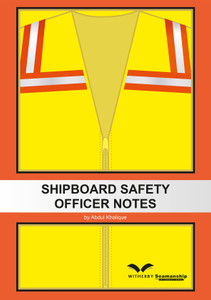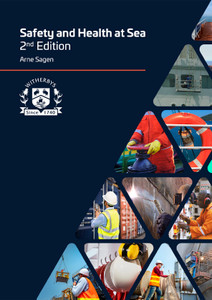
The third edition of the International Medical Guide for Ships shows designated first-aid providers how to diagnose, treat and prevent health problems of seafarers on board ship.
Since its first publication in 1967, the International Medical Guide for Ships has been a standard reference for medical care on board ships. The second edition, written in 1988, was translated into more than 30 languages and has been used in tens of thousands of ships. This, the third edition, contains fully updated recommendations aimed to promote and protect the health of seafarers and is consistent with the latest revisions of both the WHO Model List of Essential Medicines and the International Health Regulations.
The International Labour Organization’s Maritime Labour Convention 2006 stipulates that all ships shall carry a medicine chest, medical equipment and a medical guide. The International Medical Guide for Ships supports a main principal of that convention; to ensure that seafarers are given health protection and medical care as comparable as possible to that which is generally available to workers ashore.
By carrying this guide on board ships, and following its instructions, countries can both fulfil their obligations under the terms of the Maritime Labour Convention 2006 and ensure the best possible health outcomes for their seafaring population.
Seafaring has always been a dangerous occupation. Long voyages, extreme weather conditions, illnesses and accidents can take a heavy toll on the health of crew members. Not only are they exposed to greater risk, seafarers are also isolated from the usual sources of medical care and assistance available to people on shore.
WHO has consistently strived to improve the health of people at their place of work. When people also live in their work environment – as seafarers must – they face particular risks to their health. Practical guidance is essential for those who must provide assistance when seafarers fall ill or are injured. Since its first publication by WHO in 1967, the International Medical Guide for Ships has been the standard source of such guidance.
The second edition, written in 1988, was translated into more than 30 languages, and has been used in tens of thousands of ships. This, the third edition, contains fully updated recommendations aimed to promote and protect the health of seafarers. This edition is also consistent with the latest revisions of both the WHO Model List of Essential Medicines and the International Health Regulations (2005).
The International Labour Organization (ILO) Maritime Labour Convention 2006 stipulates that all ships shall carry a medicine chest, medical equipment and a medical guide. The International Medical Guide for Ships supports a main principle of that Convention: to ensure that seafarers are given health protection and medical care as comparable as possible to that which is generally available to workers ashore, including prompt access to the necessary medicines, medical equipment and facilities for diagnosis and treatment and to medical information and expertise.
The Convention states that ships carrying 100 or more persons and ordinarily engaged on international voyages of more than three days’ duration shall carry a qualified medical doctor who is responsible for providing medical care. Ships which do not carry a medical doctor shall be required to have either at least one seafarer on board who is in charge of medical care and administering medicine as part of their regular duties or at least one seafarer on board competent to provide medical first aid. Persons in charge of medical care on board who are not medical doctors shall have satisfactorily completed training in medical care that meets the requirements of the International Convention on Standards of Training, Certification and Watchkeeping for Seafarers. The International Medical Guide for Ships is a standard reference for these training courses, and is designed for use by all crew members charged with providing medical care on board.
The ILO Maritime Labour Convention 2006 stipulates that the competent authority shall ensure by a prearranged system that medical advice by radio or satellite communication to ships at sea is available 24 hours a day – the International Medical Guide for Ships explains when it is essential to seek such advice.
By carrying this guide on board ships, and following its instructions, countries can both fulfil their obligations under the terms of the Maritime Labour Convention 2006, and ensure the best possible health outcomes for their seafaring population. WHO is pleased to be able to contribute to this goal by presenting the third edition of the International Medical Guide for Ships.
Maria Neira
Director, Department of Protection of the Human Environment
How to use this guide
1 First aid
2 Shock
3 Pain management
4 Head injuries
5 Eye injuries and diseases
6 Bone, joint, and muscle injuries
7 Abdominal and chest injuries
8 Wounds
9 Burns, chemical splashes, smoke inhalation, and electrocution
10 Heat stroke and other heat disorders
11 Poisoning
12 Examination of the patient
13 Paralysis, strange behaviour, unconsciousness
14 Chest pain and other disorders of the heart and circulation
15 Respiratory diseases
16 Gastrointestinal and liver diseases
17 Kidney and other urinary disorders
18 Pregnancy and childbirth
19 Sexually transmitted infections
20 Skin diseases
21 Bone, joint, and muscle disorders
22 Tobacco, alcohol, and drug use
23 Infectious diseases
24 Dental problems
25 External assistance
26 Nursing care and medical procedures
27 Death at sea
28 Medical care for survivors at sea
29 Environmental control and hygiene
30 Preventing disease and promoting health in seafarers
31 Anatomy and physiology
32 International Health Regulations
33 The ship’s medicine chest
Annex A: Forms for case reporting, referral, and evacuation
A??s a specialized agency of the United Nations, IMO is the global standard-setting authority for the safety, security and environmental performance of international shipping. Its main role is to create a regulatory framework for the shipping industry that is fair and effective, universally adopted and universally implemented.
In other words, its role is to create a level playing-field so that ship operators cannot address their financial issues by simply cutting corners and compromising on safety, security and environmental performance. This approach also encourages innovation and efficiency.
Shipping is a truly international industry, and it can only operate effectively if the regulations and standards are themselves agreed, adopted and implemented on an international basis. And IMO is the forum at which this process takes place.
- Number of Pages:
- 489
- ISBN:
- 9789241547208
- Published Date:
- May 2009
- Binding Format:
- Hardback
- Book Height:
- 255 mm
- Book Width:
- 200 mm
- Weight:
- 1.2 kg
- Author:
IMO
- Preview:
- Yes
- Publication Date:
- May 2009





